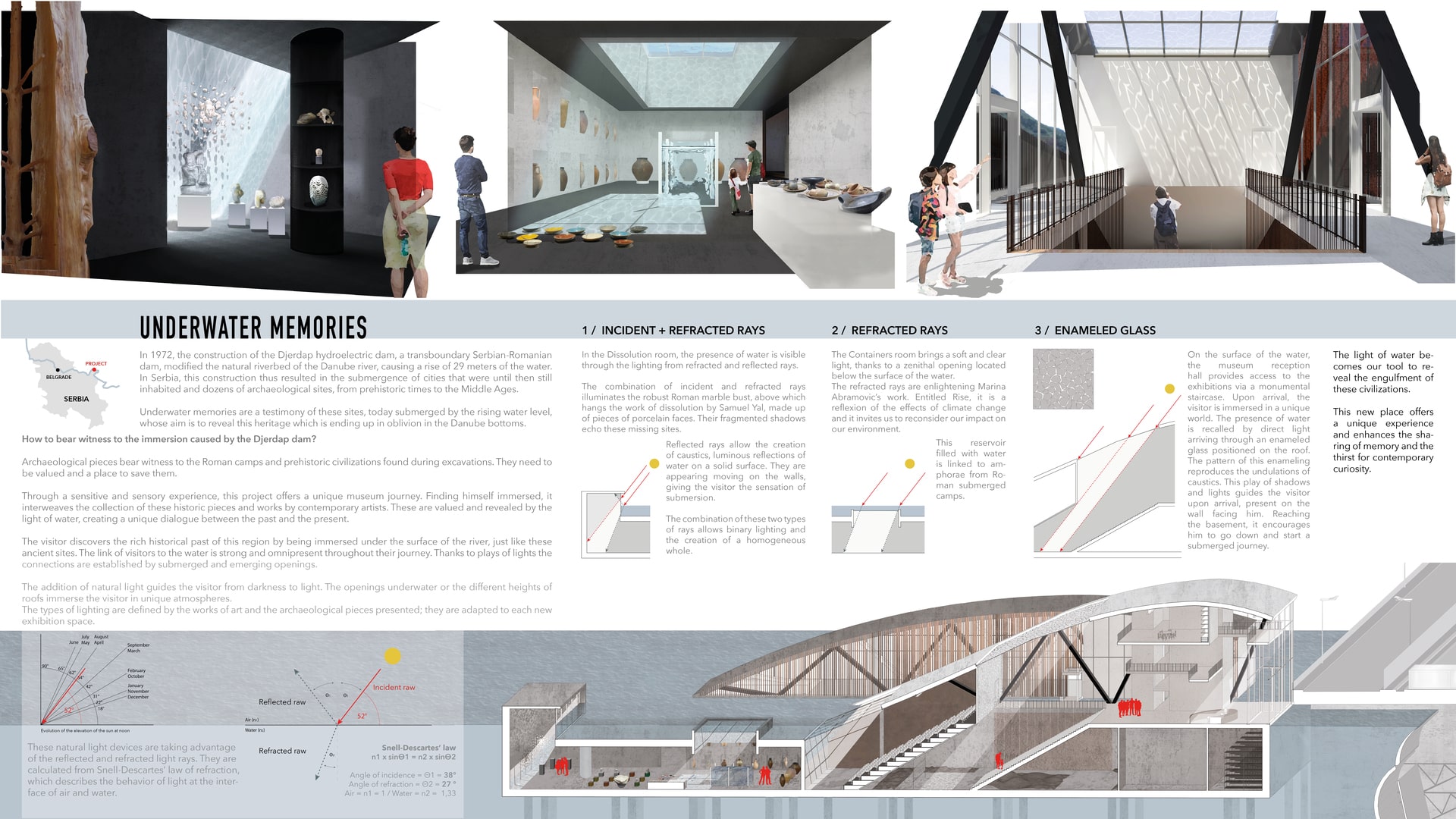Project Description
In 1972, the construction of the Djerdap hydroelectric dam, a transboundary Serbian-Romanian dam, modified the natural riverbed of the Danube river, causing a rise of 29 meters of the water. In Serbia, this construction thus resulted in the submergence of cities that were until then still inhabited and dozens of archaeological sites, from prehistoric times to the Middle Ages. Underwater memories are a testimony of these sites, today submerged by the rising water level, whose aim is to reveal this heritage which is ending up in oblivion in the Danube bottoms. How to bear witness to the immersion caused by the Djerdap dam? Archaeological pieces bear witness to the Roman camps and prehistoric civilizations found during excavations. They need to be valued and a place to save them. Through a sensitive and sensory experience, this project offers a unique museum journey. Finding himself immersed, it interweaves the collection of these historic pieces and works by contemporary artists. These are valued and revealed by the light of water, creating a unique dialogue between the past and the present. The visitor discovers the rich historical past of this region by being immersed under the surface of the river, just like these ancient sites. The link of visitors to the water is strong and omnipresent throughout their journey. Thanks to plays of lights the connections are established by submerged and emerging openings. The addition of natural light guides the visitor from darkness to light. The openings underwater or the different heights of roofs immerse the visitor in unique atmospheres. The types of lighting are defined by the works of art and the archaeological pieces presented; they are adapted to each new exhibition space. These natural light devices are taking advantage of the reflected and refracted light rays. They are calculated from Snell-Descartes' law of refraction, which describes the behavior of light at the interface of air and water. In the Dissolution room, the presence of water is visible through the lighting from refracted and reflected rays. The combination of incident and refracted rays illuminates the robust Roman marble bust, above which hangs the work of dissolution by Samuel Yal, made up of pieces of porcelain faces. Their fragmented shadows echo these missing sites. Reflected rays allow the creation of caustics, luminous reflections of water on a solid surface. They are appearing moving on the walls, giving the visitor the sensation of submersion. The combination of these two types of rays allows binary lighting and the creation of a homogeneous whole. The Containers room brings a soft and clear light, thanks to a zenithal opening located below the surface of the water. The refracted rays are enlightening Marina Abramovic’s work. Entitled Rise, it is a reflexion of the effects of climate change and it invites us to reconsider our impact on our environment. This reservoir filled with water is linked to amphorae from Roman submerged camps. On the surface of the water, the museum reception hall provides access to the exhibitions via a monumental staircase. Upon arrival, the visitor is immersed in a unique world. The presence of water is recalled by direct light arriving through an enameled glass positioned on the roof. The pattern of this enameling reproduces the undulations of caustics. This play of shadows and lights guides the visitor upon arrival, present on the wall facing him. Reaching the basement, it encourages him to go down and start a submerged journey. The light of water becomes our tool to reveal the engulfment of these civilizations. This new place offers a unique experience and enhances the sharing of memory and the thirst for contemporary curiosity.
